The use of innovative farming technologies is continually reshaping the industry. Whether it’s robots, drones or autonomous tractors, the impacts on agricultural practices are huge.
Here, we discuss how 10 of the latest agtech innovations are helping to tackle some of the enormous agricultural challenges that the world is currently facing.
The challenges of agricultural megatrends
Demographics
One of the main problems is that we need to produce more from less. According to the UN, the global population is expected to grow from 8 billion in 2022 to 9.7 billion in 2050. This growth means there’s increasing demand for food, while the accompanying urbanisation reduces the amount of land available for agriculture.
Plus, food consumption per capita generally increases as a country develops, which increases demand even further.
Climate change
Shifts in weather patterns are already affecting agriculture across the world. This is widely predicted to get worse, leading to further challenges around maintaining – never mind increasing – production.
Also, climate change will bring about competition for natural resources, such as water, making farming even harder.
How to overcome these challenges?
Just as modern technology has massively changed every other aspect of our lives, today’s development of intelligent agriculture robots are revolutionising the industry like never before.
To perform farming tasks, agriculture robots must have a blend of intelligent decision-making, precise navigation and excellent dexterity.
Sensors play a vital role throughout many of these processes. For example, sensors are needed to detect hazards that might hinder the movement of the robot, to identify crops that are ready to be harvested and to detect when the robot has grasped a piece of fruit with just enough force to pick it.
The sensors likely to be incorporated include touch, azimuth, ultrasonic (for spraying), GPS, RGB, LiDAR, moisture and near-infrared spectroscopy (NIRS, for testing milk quality).
10 of the best types of agriculture robots
1. Seeding robots
By sowing seeds in exactly the right positions and with minimal waste, it can have major production benefits for farmers. Robots are being developed that can dig soil, plant seeds, add fertiliser and then water.
FarmDroid is one such seeding robot, which can also weed (see below). It is powered by solar panels and uses GPS to accurately record where seeds are placed. This data makes it easier to remove any weeds between and within rows later on. The manufacturer claims that its solar panels can provide up to 24 hours of CO2-neutral operation.
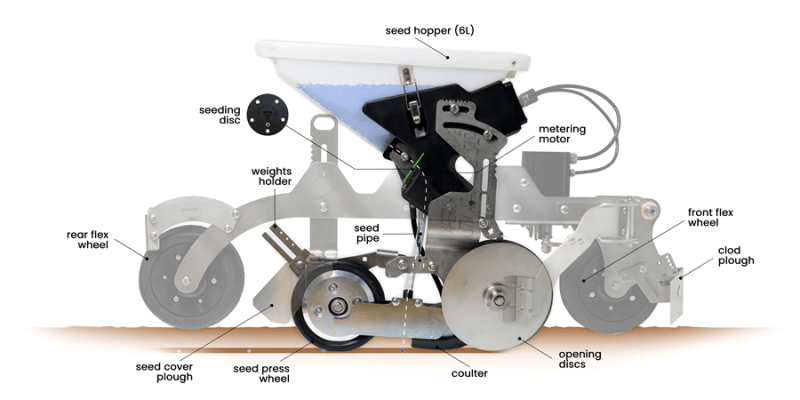 Source: Farmdroid
Source: Farmdroid
2. Harvesting and picking robots
Robots can harvest a range of crops, such as corn, rice and soft fruit. While the delicate nature of some fruit and vegetables has been a limiting factor for robot use in the past, improved sensor technology and precise motion mean that this is no longer the case.
Fieldwork Robotics is developing horizontal and vertical harvesting robots for selective harvesting. The manufacturer says: “Meticulous redesigns of sensor technology and grippers minimise slippage, significantly reducing harvesting time. Using 3D cameras, sensors, and machine learning, our robots pick fruits at the perfect level of ripeness, ensuring efficiency and precision.”
.jpg?width=840&height=464&name=Modular-flexible-robots-%20(1).jpg) Source: Fieldwork Robotics
Source: Fieldwork Robotics
3. Drones
These can be used for quick and efficient monitoring and treatment of large areas. For example, where sensing drones identify a pest hotspot in a field, actuation drones can then be used to spray pesticides onto crops.
The Agras T40 drone, developed by DJI Agriculture, is an example of a multipurpose drone. It can be used for surveying, mapping, spraying and spreading, with a carrying capacity of 40–50 kg. It features an integrated “binocular vision sensor system to provide 360-degree horizontal omnidirectional obstacle sensing”.
.png?width=450&height=240&name=agras%20t40%20(1).png)
Source: Dji
4. Crop sprayers
Pesticides can be harmful to health, so the benefits of removing humans from this task are obvious. By using intelligent land-based robots, pesticides can be delivered only where they are required and in very precise quantities. Similarly, fertilisers can also be efficiently delivered by robot.
In August 2022, Solinftec unveiled its Solix Sprayer Robot, which can service up to 100 acres per day. According to the manufacturer, the benefits include:
- Unmatched autonomy and precision.
- Early-stage weed control and input optimization.
- Enhanced productivity and efficiency for the agricultural market.
- Elimination of insects without chemical pesticides.
- Real-time agronomic information at scale.
- Sustainable target-spray applications for optimal crop treatment.
.jpg?width=800&height=474&name=aaaaaaaaaaaaaa%20(1).jpg)
5. Weeding and mowing machines
Robots are now available that agitate the soil and then pull up weeds, or cut them with a blade. This task is vital to maintain the quality and quantity of yields. Similarly, autonomous mowers have been available for use in private gardens for several years and are now being employed on an industrial scale.
The SCARABAEUS mowing and mulching robot by Probotics is claimed to be a “high-tech version of the self-propelled lawn mower”. It’s small enough to navigate through narrow gaps and mow to within a few centimetres of the trunk, with the ability to use solar power or electricity from the grid.
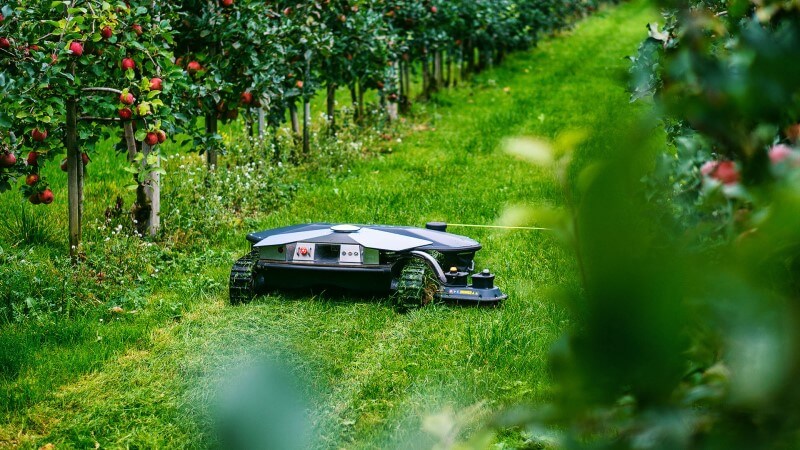 Source: Probotics
Source: Probotics
6. Sorting and grading robots
Once harvested, produce needs to be sorted to remove damaged and defective items. Similarly, produce is usually graded based on quality and size. Traditionally, this was a very repetitive and labour-intensive task, but the use of intelligent robots is much more efficient.
An example is the SiftAI® vision system, developed by KPM Analytics. The system captures information on size, quality, texture, colour, the presence of any foreign objects and so on. It can be used with potatoes, fruits, vegetables and meat.
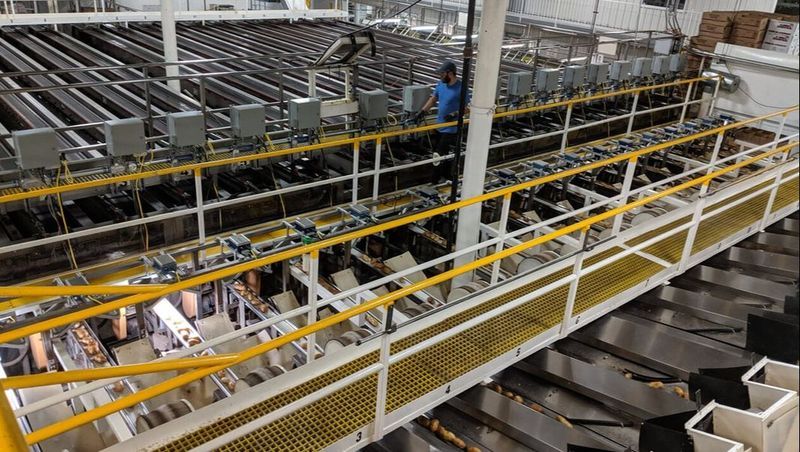 Source: KP Amanalytics
Source: KP Amanalytics
7. Autonomous tractors
Tillage is a very time-consuming activity on a farm. So, by using an autonomous tractor it frees up valuable time for the farmer, not to mention removing the health and safety risks associated with driving a tractor.
John Deere is currently developing a fully autonomous tractor. It features cameras to provide 360-degree vision so that it can see objects in the field and triangulate distance. AI is then used to determine whether the area is safe to drive over. The tractor also has a fully equipped cab with operator controls, meaning that it can still be driven by a human if required.
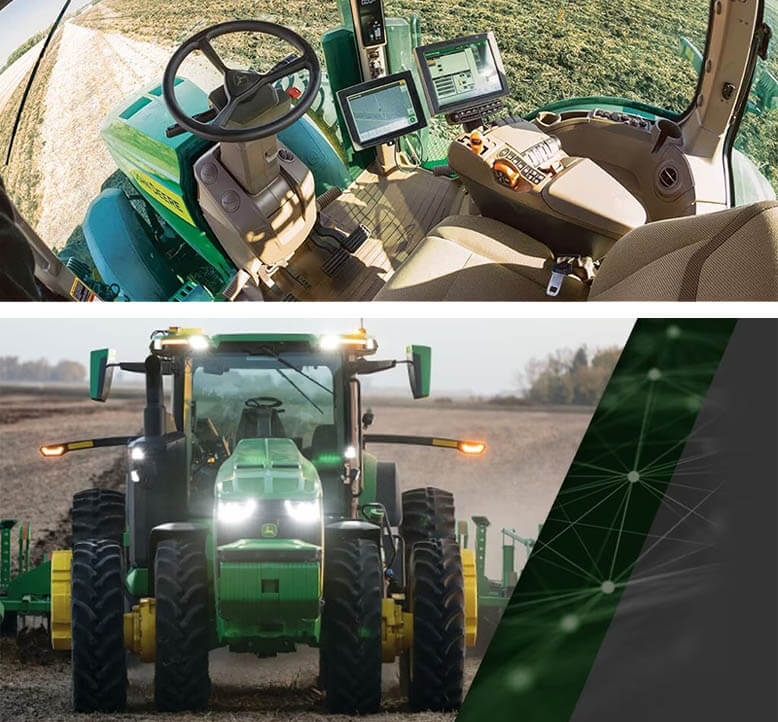 Source: Deere
Source: Deere
8. Livestock management robots
Robots can be used around livestock in many ways, such as for milking dairy cows, feeding livestock in a precise and timely manner, monitoring conditions and collecting eggs inside poultry houses, and disinfecting areas to improve breeding.
GEA has created the “next generation of intelligent automated milking” for farms, with its DairyRobot R9500. This energy-efficient milking robot incorporates “pioneering sensor-based technology that helps facilitate earlier detection of mastitis”. This provides an early warning of any health problems to help ensure the long-term productivity of the herd.
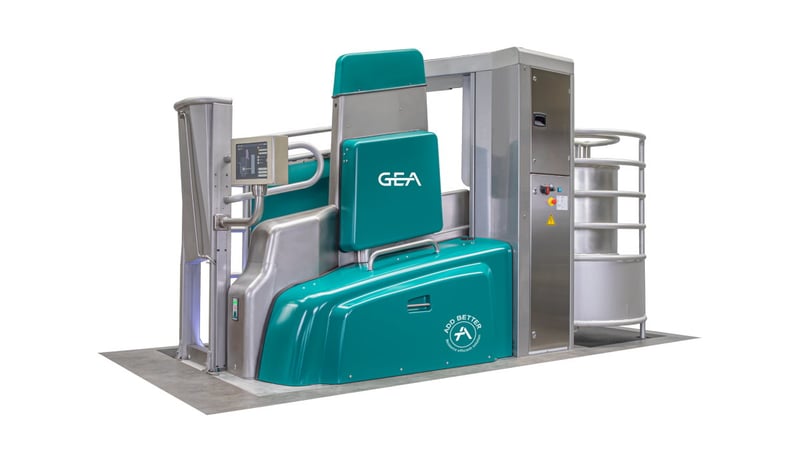
Source: GEA
9. Pruning robots
Certain crops, such as grapevines, need pruning throughout the growing season to ensure optimal growth. Robots can identify areas that require pruning and then carefully perform the task.
Unlike many others, this type of robot is largely still in the development phase. This is because pruning is a very intricate task, which requires complex systems to analyse trees and to decide whether to prune or not. Plus, the robot needs to carefully navigate through the canopy before making cuts, which can be difficult.
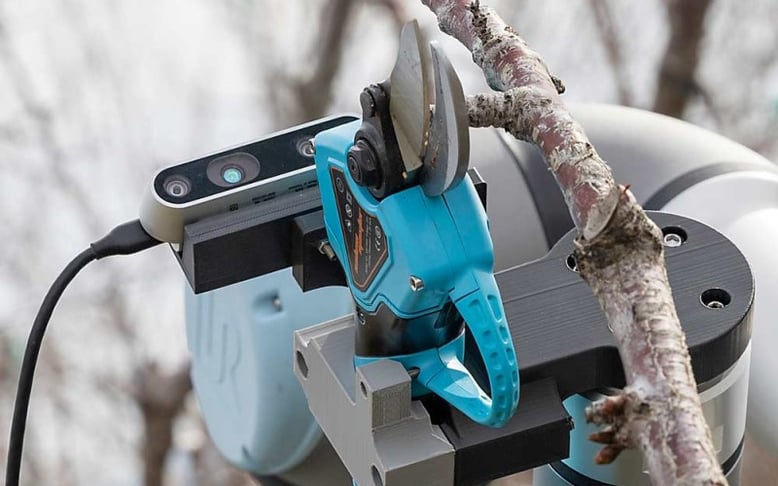
Source: Goodfruit
10. Phenotyping robots
Collecting field data using robots is a very effective way to identify progress, problems, ripeness etc of a crop. Data is often at the heart of making improvements in agriculture, and robots make it quick and easy to obtain accurate data.
Examples of commercially available phenotyping robots are rare at the moment. But research is ongoing to investigate the use of different sensors (such as RGB, multi- and hyperspectral cameras, and 3D) alongside mobile platforms for rapid and efficient phenotyping.
A multidisciplinary approach
The ultimate outcome is that these robots can replicate – or even improve upon – human performance, resulting in higher yields, lower costs, less waste and more efficient production overall.
While many of these technologies are still in their infancy, the potential is clear to see. As with all great innovations, it takes time to perfect the technology and to bring it to market in an affordable way.
It’s only by working together that multidisciplinary innovators will continue to build even better and more capable robots. But by doing so, the farming industry will be able to provide for generations to come.


